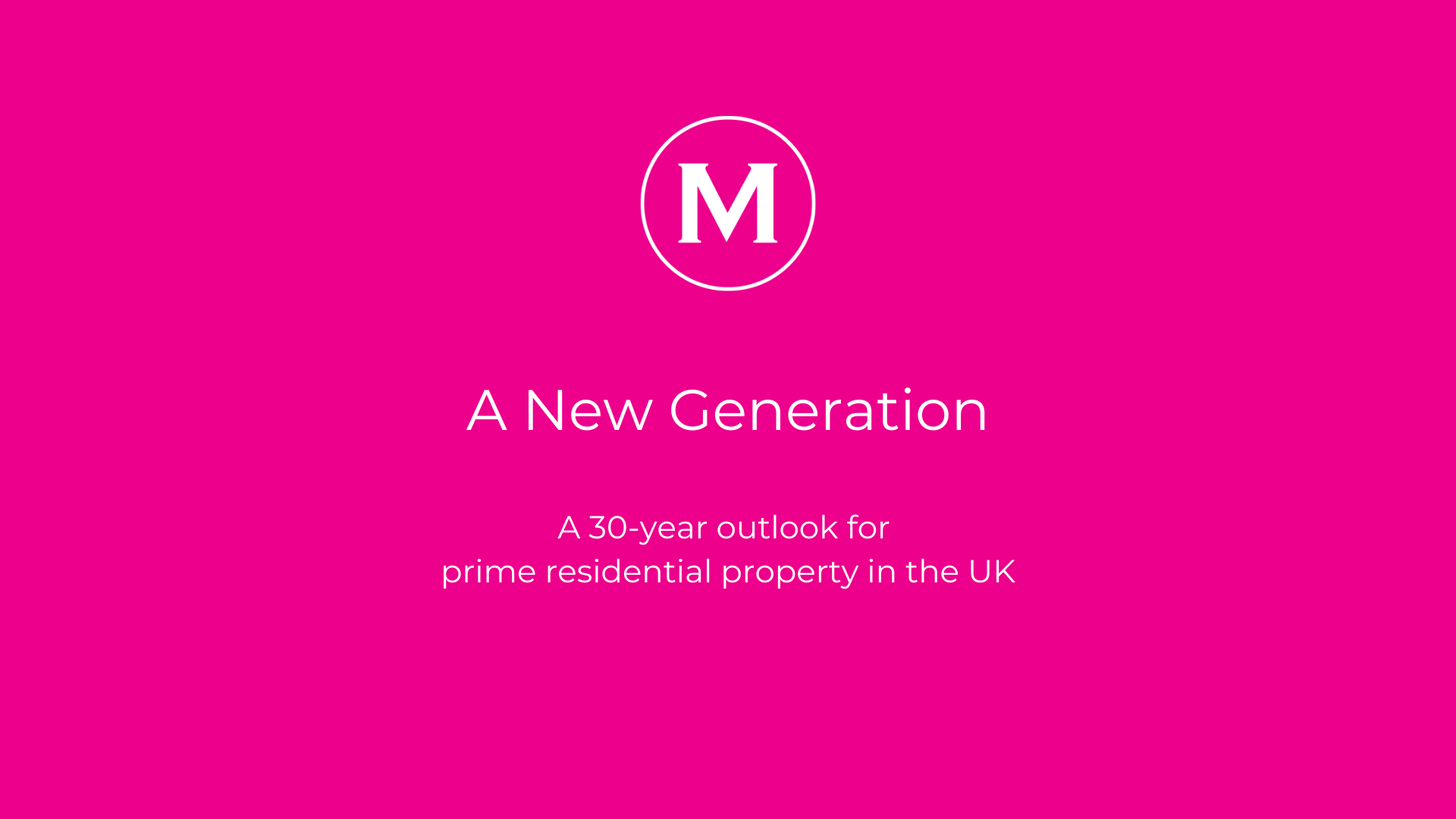Our Market Insights reports investigate key trends and structural changes in the UK’s prime housing markets. Long-term performance matters to homeowners. This report – part of our ongoing collaboration with real estate researcher Yolande Barnes – considers relevant factors for the next 30 years and what the future might hold for prime property.
The key findings are below:
- A fundamental force in demand for housing, often overlooked, is changing demographics. This is not only about population growth but also aging cohorts, generational shifts in demand patterns and different housing fashions between age cohorts.
- Localised population decline is already adversely impacting house prices in some overseas locations. This is not an issue in the UK because migration is predicted to counteract falling fertility rates. Current population projections equate to new housing demand of around 220,000 homes a year in this decade, falling to 126,000 a year in the 2040s. The new government’s target of 350,000 new homes each year looks like over-supply.
- The key emerging trend is that the UK population is not just aging but becoming elderly. In the years to 2040 there will be a significant increase in the number of elderly households – and the number of homes coming to the market from the estates of the deceased.
- Demand from the elderly is likely to include new types of housing suitable for older residents with substantial purchasing power – but not just care homes or retirement communities. This is a prime market in the making: large lateral conversions in accessible and attractive towns and cities, single level eco-retreats and barn conversions in beautiful places with good amenities.
- The deceased will leave not just property but also freed-up capital. Whether passed directly to grandchildren or via their parents, a lot of this capital will by-pass the fully-housed and enable market participation in younger generations. For some, this will boost their purchasing power sufficiently for them to compete for the most desirable properties in the prime markets.
- Upcoming Gen Z and Alpha households will also carve a new niche in prime markets. High levels of environmental consciousness will likely mean a continued lease of life for country properties. AI will mean continued freedom with conventional workplaces and urban living becoming a choice rather than a necessity. Multi-generational households requiring large, adaptable properties could also become a major feature of these markets.
- Gen Z will probably continue to occupy eastern parts of London, although also tempted by many other global cities. We may well also see them pursuing experiences and environmentally conscious country lifestyles in some of the hitherto less fashionable counties like Kent, Somerset or West Yorkshire.
- The machine-learning, AI enabled, Gen Alpha will be supporting an unprecedented large number of aging elders who probably won’t want to age in gated communities like their forebears. Gen Alpha may well be providing the care robots needed to enable aging in place and the slower recycling of homes. As pressures grow on the largest, rarest and most beautiful of prime stock, we may see a return to multigenerational and even communal living.
Read the full report here.




